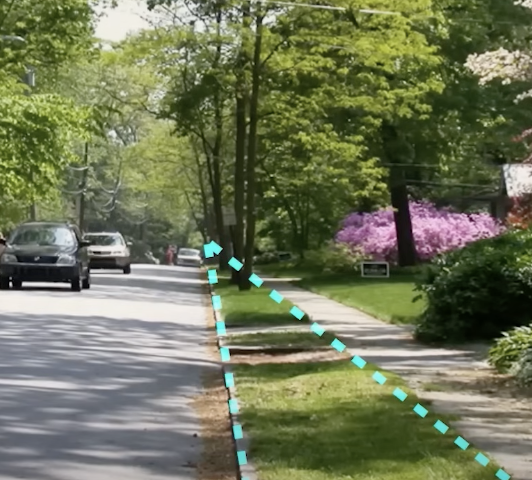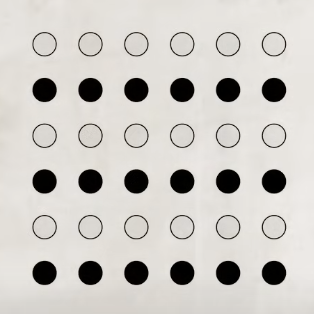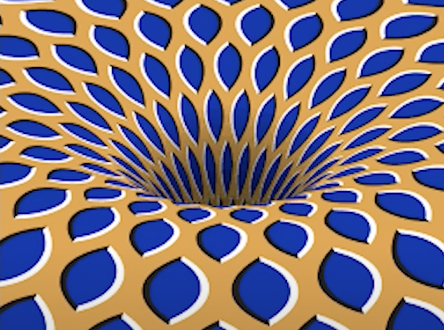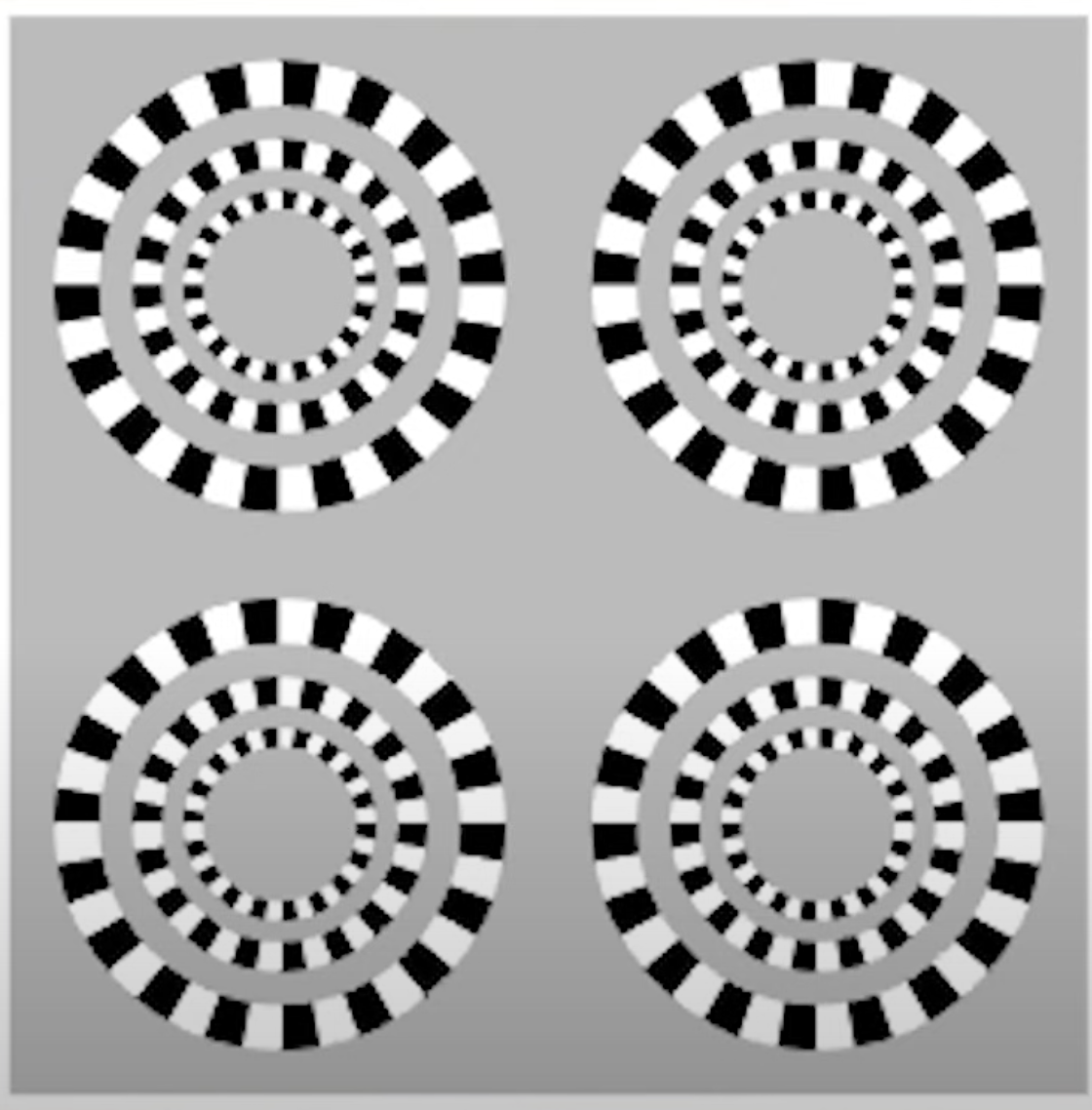unit 2: cognition
1/132
There's no tags or description
Looks like no tags are added yet.
Name | Mastery | Learn | Test | Matching | Spaced |
|---|
No study sessions yet.
133 Terms
perception
process of interpreting the information we obtain through our five senses
bottom-up processing
when the stimuli or experience is complex and not familiar
example: building understanding from scratch, using only what you see, hear, touch, etc
top-down processing
when you use prior knowledge and experiences to interpret information. helps us process things in a quick manner
example: proof-reading a paper you wrote
schemas
mental frameworks that organize and interpret information based on prior knowledge and experiences
example: everyone knows what you do at a birthday party, since you have been to them before
perceptual sets
a mental shortcut your brain uses to quickly interpret what you’re experiencing, based on your past experiences, beliefs, culture, or context
gestalt psychology
we perceive things as whole patterns, not just a bunch of separate pieces. our brains naturally organize info into meaningful groups.
relative size
objects closer to us appear larger while objects farther away appear smaller
monocular cues
depth cues that require one eye and help us perceive depth on flat or two-dimensional surfaces
binocular cues
depth cues that require both eyes that help you perceive distance and depth in the visual field
texture and gradient
objects that are clear, in focus, and full of detail than objects that lack details and appear more blurry
linear perspective
when parallel lines appear to connect at a point in the distance, which helps use understand our positioning and depth

interposition
when objects are blocked by another object they are most likely farther away, while that are not blocked are closer
stroboscopic movement
the visual effect of creating the illusion of movement through a sequence of still images

phi phenomenon
when lights blink on and off in a sequence, making it look like object are moving, even though they are still
proximity
objects close together are perceived as a single group, while objects far apart are perceived as separate entities

similarity (gestalt psychology)
suggests objects that are similar in appearance are often perceived as belonging together

closure (gestalt psychology)
when our brain subconsciously fills in missing information when viewing a familiar but incomplete object

continuation (gestalt psychology)
addresses why our eyes naturally follow continuous lines or paths
example: seeing an exit sign with an arrow
perceptual constancy
your brain knows that objects stay the same, even if their appearance changes (like size, shape, or color) depending on distance, lighting, or angle
shape constancy
perceiving an object’s shape as the same, even with it moves
example: closing or opening a door
autokinetic effect
when a still point of light in a dark environment appears to move

motion parallax
objects motioning closer to you appear to move quickly, while those that are farther away seem to move slower
example: when you look out a car window, cars seem to go really fast but landscapes and clouds appear to slowly moving
concepts
mental categories that help us organize and understand the world
example: dog breeds, fruits, vehicles
prototypes
the most typical or best example of a concept that comes to mind
example: the concept is ball, the prototype is basketball, baseball, etc
heuristic
quick strategies your brain uses to make fast decisions or solve problems, does not always guarantee accuracy, but they save time and effort
representative heuristic
a shortcut in which you compare something to see how much it fits a prototype
availability heuristic
making judgements based on how easily availiable examples come to mind
example: you hear about shark attacks on the news, so you think they’re super common, but they’re actually very rare
gambler's fallacy
the belief that past events in a random sequence affect future events
example: "If I flip a coin and get heads five times in a row, the next flip is more likely to be tails."
sunk-cost fallacy
when people continue an endeavor because of already invested resources (time, money, effort), even if it's no longer the best option
example: staying at a bad movie just because you've already paid for the ticket.
divergent thinking
when a person explores many possible solutions
example: listing all the possible uses for a paperclip
convergent thinking
focusing on finding a single, correct solution to a problem
example: solving a math problem
functional fixedness
limits a person to using an object in only its traditional way
example: using a hammer only for driving nails, rather than as a doorstop
mental set
the tendency to approach problems in a way that has been successful in the past, but may not be effective in solving new problems.
specific to problem solving. can limit our creativity
parallel processing
the brain's ability to process multiple pieces of information simultaneously.
example: while driving, you watch the road, listen to music, and steer all at the same time.
priming
when exposure to something influences your response to something else, often without you realizing it
example: seeing "ocean" makes you faster at completing "sh__e" as "shore", your brain was unconsciously prepped.
framing effect
refers to how information is presented, influencing our decisions and judgements
explicit memory
memory of facts and events that one can consciously recall and describe
example: remembering your birthday or what you studied for a test
implicit memory
information or skills we learn without being fully aware of it, such as skills or habits
example: riding a bike
episodic memory
type of explicit memory for specific events and personal experiences
example: first day of school
short-term memory
holds a small amount of information for a brief period (about 15–30 seconds)
long-term memory
has an unlimited capacity and can store information for long periods of time. includes facts, skills, and experiences.
working memory
also known as short-term memory, where it can hold a limited amount of information for a short period of time, also processes information
long-term potentiation (LTP)
a long-lasting increase in signal strength between neurons after repeated stimulation; helps form memories.
example: practicing flashcards
automatic processing
information is gathered with little or no conscious effort like space, time, and frequency.
flashbulb memory
a crystal-clear, specific memory of an emotionally significant event
example: remembering what you were doing during 9/11
encoding
getting information to our brain and finding meaning.
short term memory → long term memory
visual encoding
when we encode information based on visual elements, such as images or spatial relationships.
acoustic encoding
the process of encoding information through sound, particularly the sound of words or auditory patterns.
method of loci
a mnemonic device that helps you remember information by relating it with specific locations in a familiar space
chunking
an encoding strategy that involves grouping individual pieces of information into larger units
example: 149217385 becomes easier if you group them as 149, 217, 385.
spacing effect
distributing learning over time leads to better long-term retention as it improves memory consolidation
serial position effect
the tendency to remember the first (primacy effect) and last (recency effect) items in a list better than the middle ones
primacy effect
tendency to remember items at the beginning better. occurs because early items receive more rehearsal and processing
recency effect
tendency to remember items at the end of a list better. occurs because it’s still fresh
sensory memory
the immediate, but very brief recording of sensory information
iconic memory
type of memory that stores visual information for a very brief period
example: seeing a sparkler’s light trail, it’s your brain briefly holding the image after it’s gone
echoic memory
type of memory that stores auditory information for a brief period, lets you recall sounds shortly after hearing.
phonological loop
part of working memory: helps us hold and work with sounds and words in our minds
example: repeating a phone number in a loop or something we just heard
visuospatial sketchpad
part of working memory: handles visual and spatial information. it helps with tasks like visualizing objects and their location
example: mentally rearranging furniture in a room
maintenance rehearsal
when you repeatedly go over information so you don’t forget it and maintain it
elaborative rehearsal
when you connect new information to something you already know, which makes it easier to remember
retrograde amnesia
when a person can no longer retrieve past information, could happen because of brain injury or trauma
anterograde amnesia
when a person can no longer form new memories
infantile amnesia
when an adult can’t remember personal experiences from their early years of life
alzheimer's disease
progressive brain disorder that causes memory loss, confusion, and thinking difficulties
recall
retrieving information without any cues or hints
recognition
identifying information when you see it again and recognize it, using cues
example: picking the right answer on a multiple choice test
context-dependent memory
you remember something better when you’re in the same environment where you learned it
mood-congruent memory
when you’re more likely to remember memories that match your current mood
example: finding it easier to remember positive memories when you’re happy
state-dependent memory
you recall information better when you're in the same physical or mental state as when you learned it
example: when you are sick, you’re more likely to remember the time when you were last sick
testing effect
where people remember information better if they previously tested themselves on it, rather than just studying it
metacognition
awareness of your own thought process; can guide with better review and remembering
forgetting curve
shows time plays a major role in forgetting, with most forgetting happening soon after learning it
proactive interference
when old memories interfere with the ability to remember new information
example: remembering your old address when you try to remember your new one
retroactive interference
when new memories interfere with the ability to recall old information
example: after learning a new language, you can forget words from a previously learned language
tip-of-the-tongue phenomenon
the feeling of knowing something but being unable to recall it at the moment
example: when know how a song goes but can’t remember what it’s called
repression
helps to defend against difficult emotional thoughts or experiences.
misinformation effect
altering a memory with misleading or false information, causing that memory to be distorted
source amnesia
when a person can remember the information but cannot recall where or how they learned it
constructive memory
fills in memory gaps from actual memories with imagined details, creating false memories
memory consolidation
the next step after encoding; how your brain strengthens and stabilizes memory over time (often during sleep)
general intelligence (g)
underlies all cognitive abilities, meaning people who are good at one mental task are likely to be good at others
flynn effect
refers to the rise in IQ scores over time, with each generation outperforming the last
achievement tests
designed to measure what someone knows and/ or has learned at a specific point in time
example: taking the bitchass ap psych exam
aptitude tests
aim to predict future performance
example: sat or act
fixed mindset
believes that intelligence is something you are born with and cannot change
example: people who give up easily when faced with challenges
growth mindset
believe that intelligence can be grown and developed through effort and learning
construct validity
the extent to which a test constructs what it is intended to measure
example: a math test should actually measure math skills
predictive validity
the extent to which a test predicts future performance or outcomes
example: a high school entrance exam should predict how well students perform in high school
test-retest reliability
refers to the consistency of test results over time when a person takes the same test again
split-half reliability
refers to the consistency of results within the test itself, such as comparing scores from two halves of the same test
example: if you split an 100 question test into two 50 question sections, both halves should have similar results for a reliable test
stereotype lift
when people perform better because they are aware of positive stereotypes about their group
crystallized intelligence
the ability to use knowledge and skills gained through experience and education
increases as we get older
fluid intelligence
the ability to quickly reason and breakdown abstract problems
decreases as we get older
selective attention
when we focus on a stimulus and tune out other stimuli in our environment
example: having a conversation in a loud party
cocktail party effect
the ability to focus on a specific conversation or sound in a noisy setting
change blindness
a type of inattentional blindness where we fail to notice changes in our environment
inattentional blindness
the failure to notice a stimuli in our visual field due to our attention being focused on something else
apparent motion/movement
when we see motion even though nothing is actually moving

assimilation
when we add new information into existing schemas, does not alter it
example: calling a zebra a horse